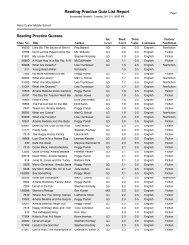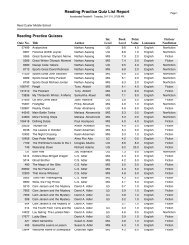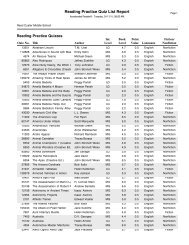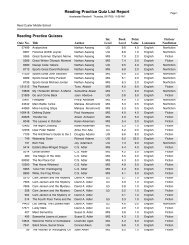Chapter 3: The Ancient Israelites
Chapter 3: The Ancient Israelites
Chapter 3: The Ancient Israelites
Create successful ePaper yourself
Turn your PDF publications into a flip-book with our unique Google optimized e-Paper software.
Education in <strong>Ancient</strong> Israel and Judah<br />
Early <strong>Israelites</strong> placed a high value on<br />
education. Rabbis—Jewish religious<br />
teachers—taught their followers, “If you<br />
have knowledge, you have everything.”<br />
Unfortunately, only boys were allowed<br />
to go to school.<br />
Fathers taught their young sons the<br />
commandments. <strong>The</strong>y also taught them<br />
about the meanings of Jewish traditions<br />
and holy feasts. At age five, boys went<br />
to a school that was connected with<br />
the synagogue. <strong>The</strong>re, the hazan, or<br />
minister of the synagogue, taught them<br />
the Torah. Everything the students<br />
learned—from the alphabet to Jewish<br />
history—they learned from the Torah.<br />
Jewish laws decided the stages of<br />
students’ education. Different subjects<br />
were introduced at the ages of 5, 10,<br />
and 13. Most Jewish boys finished<br />
their education at age 13. At that age,<br />
boys became adults.<br />
Children studying the Torah today<br />
Connecting to the Past<br />
1. Why was education important to the<br />
ancient <strong>Israelites</strong>?<br />
2. What was a father’s role in his son’s<br />
education?<br />
Mothers educated their daughters at<br />
home. <strong>The</strong> girls learned to be good wives,<br />
mothers, and housekeepers. This included<br />
learning Jewish laws about food and<br />
clothing. <strong>The</strong>y also learned about the courageous<br />
women of ancient Israel. One of these<br />
women was named Ruth. Her biography<br />
appears on the next page. Her courage and<br />
devotion to her family provided an example<br />
for Jewish girls to follow.<br />
<strong>The</strong> Jewish Diet Under Jewish law, Jews<br />
could eat only certain animals. For example,<br />
they could eat beef and lamb but not<br />
pork. <strong>The</strong>y could eat scaly fish, like salmon,<br />
but not smooth-skinned fish, like eels. Laws<br />
about food were known as kashrut, which<br />
means “that which is proper.”<br />
Today, food that is prepared according to<br />
Jewish dietary laws is called kosher. Animals<br />
used for kosher meat must be killed in a<br />
special way. <strong>The</strong> meat must be inspected,<br />
salted, and soaked. To be kosher, Jews must<br />
not cook or eat milk products with meat.<br />
In ancient times, everyday meals were<br />
made up of fish, fruit, vegetables, and barley<br />
bread. Beverages included mainly milk,<br />
water, wine, and beer.<br />
Jewish Clothing Jewish law forbade mixing<br />
some fabrics. So women used flax or wool<br />
to make cloth but did not combine the two.<br />
Jewish men wore tunics made of linen<br />
next to their skin. Some men layered<br />
another tunic on top of the first. In cold<br />
weather, they added wool or sheepskin<br />
cloaks. On their heads, they wore caps or<br />
turbans. On their feet, they wore sandals.<br />
Women draped themselves in long, simple<br />
dresses. <strong>The</strong>y covered their heads with<br />
shawls. Only wealthy women could afford<br />
leather shoes. <strong>The</strong>y also wore makeup and<br />
jewelry.<br />
Analyze Why were sons<br />
especially valued in Jewish society?<br />
Lawrence Migdale/Getty Images












